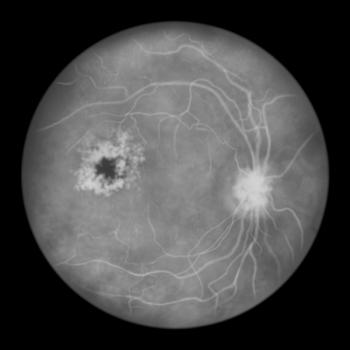Five Years On, COVID-19 Continues to Instruct the Future
We are approximately 5 years out from community pharmacy’s collective response to the COVID-19 pandemic. In the early days of 2020, pharmacies adjusted to social distancing, curbside delivery, and staying open when all other providers except hospitals shuttered their doors. By the end of 2020, pharmacies were preparing for or already implementing point-of-care testing (POCT) and vaccine administration.
Governors Respond to Policy Limits on Pharmacist Scope of Practice
Now, a postpandemic but still endemic COVID-19 presence joins influenza, pneumonia, respiratory syncytial virus, and other infections and conditions that can be identified, treated, and prevented under protocol. And who knows better than pharmacy how to follow a protocol (prescription).
With significant changes to immunization approvals and posture both within the CDC Advisory Committee on Immunization Practices and the FDA, community pharmacy has found itself in a policy gap between public expectations for community pharmacy and lagging legislation, insurance coverage, and administrative action in states that have not sufficiently updated their policies and regulations toward pharmacies with POCT, immunization ordering, and other primary (pharmacy) care services.
About the Author
Troy Trygstad, PharmD, PhD, MBA, is the executive director of CPESN USA, a clinically integrated network of more than 3500 participating pharmacies. He received his PharmD and MBA degrees from Drake University and a PhD in pharmaceutical outcomes and policy from the University of North Carolina. He has recently served on the board of directors for the Pharmacy Quality Alliance and the American Pharmacists Association Foundation. He also proudly practiced in community pharmacies across North Carolina for 17 years.
Through alliance and actions, governors in New York, North Carolina, Minnesota, Arizona, California, Washington, and Hawaii have all provided abilities for pharmacists in the community to either order or act under a standing order to initiate and administer COVID-19 vaccinations. Other states had no need for these updates, as either their state legislature and/or administration had already acted to update archaic pharmacy practice laws in their respective states.
Many Factors Buttress Policy and Coverage Change, but None Greater Than Public Demand
These actions were in response to health care system and political recognition that there was not a single documented event of significant harm caused by a pharmacist initiating and administering the COVID-19 vaccine throughout what is likely now more than half a billion instances of this service performed in a community pharmacy. With more than 90% of adult immunizations occurring in a community pharmacy, we have established safety, efficacy (in trust and gap closures for patients needing vaccines), and convenience. This all could have happened without COVID-19 with the right (coordinated) approach; COVID-19 simply accelerated the inevitable recognition of pharmacists providing services.
Many factors affect policy and coverage responses, including the following:
- Studies (formal and informal): Yes, studies that demonstrate the safe provision of services and the cost-effectiveness of such services matter. Yes, preventing harm in a peer-reviewed study that gets referenced from time to time in a legislative hearing matters. “Gray” papers that describe the utility of pharmacies, their underappreciated contributions, and their unrecognized potential are helpful to frame the policy debate and considerations therein, but they don’t drive change; they support change.
- Lobbying: Lobbying is an essential greasing of the government wheel at federal, state, and even county and municipality levels for largely populated local areas. Lobbyists move things along by helping legislators and administrators with background, language, and policy suggestions that fit a particular path necessary to achieve change. They are an accelerant and a necessary coenzyme, but they don’t drive change for any constituency except for the most well-healed groups.
Although the Fortune 50 list is rife with drug manufacturers and insurers, community pharmacists would be right around 100 on the list. It would stand by itself if one considered 135,000 pharmacists practicing at a cost of $150,000 each to the system (ie, a $20 billion economic impact based on revenue), and more than two-thirds of those pharmacists are employed by retailers with a different lobbying priority.
- Low administrative friction: All the moons could align with acceptance of pharmacist services, and the service profusion throughout the system could still fail because it is simply too difficult and too costly to get paid, or to get paid in a compliant manner. Administrative friction is the silent killer of pharmacist-provided services, but lack of friction doesn’t drive change.
- Patient and caregiver demand (the primary factor): Patient and caregiver demand drive change. There is no disputing it. Patients want heart surgery covered because they perceive it to be lifesaving and necessary. There are likely thousands of services allowed under health professionals’ respective scopes of practice, with little evidence of effectiveness, and hundreds that are covered by insurance—but they all have patient and caregiver market demand. Three key drivers of change for pharmacist practice are perceived need (patients and caregivers believe that they are likely to gain health from the service or that they are at risk of harm without it), perceived effectiveness (patients and caregivers believe it works), and perceived cost in dollars, time, and effort.
What the COVID-19 Response Should Teach Us About the Path Forward
As a profession, we are not doing anything wrong to advance pharmacist-provided services. Studies, lobbying, and the grinding work of technical standards, workflow improvements, and practice transformation have all been contributors to supporting change for decades, and that work needs to continue. It’s what we are not doing—or doing a poor job of funding and implementing compared with our health care teammates—that is holding us back.
We need to be more forward-leaning on the following:
- Public education on the risks of lick, stick, and fill: Racing to the bottom provision of services leads to feigning of services, shortcuts, or outright poor provision, in which competition for contracts actually drives the service to a shell of its intended purpose.
- Public education on the risks of so-called minor dispensing fees: How in the world are pharmacists and their staff supposed to meet all the obligations of the Omnibus Budget Reconciliation Act of 1990 and safely dispense medications with counseling and in the context of all conditions and considerations for a $0.65 service fee (dispensing fee)? What a joke. The public is at risk and lives are lost every day from suboptimal medication use, so why are we so afraid to say that de minimis dispensing fees kill people?
- Public education on the benefits of pharmacy services: We do a horrible job of promoting the health and well-being difference between a medication optimized for use and a medication simply dispensed without care and follow-up. (Selective serotonin reuptake inhibitor titration, anyone?)
It’s Bad Out There, and It’s Time to Get Serious
Yes, pharmacy benefit managers are the tip of the spear thrust into the heart of community pharmacy. But their “drug cost police” market offering and subsequent opportunistic, aggressive, and harmful business practices are owed to a lack of public perceptions of the harm caused by a lack of services reimbursement (adequate dispensing fees and coverage of scalable primary pharmacy care). Their current posture and business model are only possible because of the lack of patient and caregiver demand for something different. It’s time to stop talking to ourselves and go to the people who benefit from our existence and show them what they are missing—just like with vaccinations.



























































































































































































































